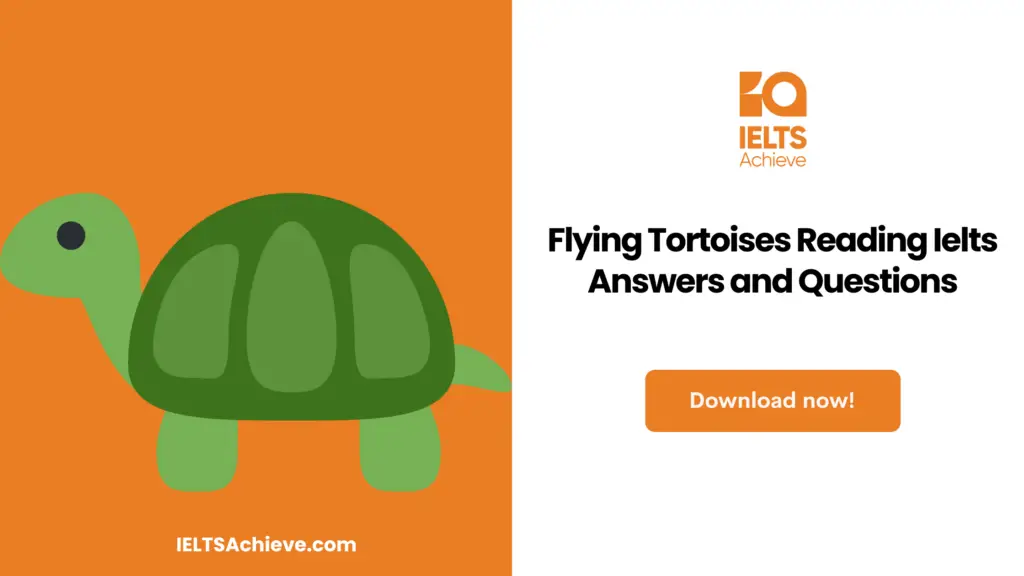The Blog post contains the following IELTS Reading Questions
- IELTS Reading Short Answer Questions
- IELTS Reading True False Not Given
- IELTS Reading Summary Completion
Stay informed and prepared for success – Explore our comprehensive Reading Test Info page to get valuable insights, exam format details, and expert tips for mastering the IELTS Reading section.
Communicating in colour Reading Passage

Communicating in Colour
Chameleons have around 160 different species. The majority of the species are found in Africa, Madagascar, and other tropical climates, while several are also found in sections of southern Europe and Asia. There are introduced populations in Hawaii, as well as California and possibly Florida.
Novel species are still found on a regular basis. Dr. Andrew Marshall, a York University conservationist, was studying monkeys in Tanzania. In the Magombera forest, he stumbled upon a twig snake, which, terrified, coughed up a chameleon and ran. Although being advised not to touch it due to the risk of venom, Marshall suspected it was a new species and took an image to transmit to colleagues, who verified his findings. Kinyongia Magombera, which translates as “the chameleon from Magombera,” is the consequence, and the fact that it was difficult to identify is exactly what made it distinctive.As a result, colour is not the greatest way to distinguish chameleons, and various species are usually identified based on the patterning and form of the head, as well as the arrangement of scales. In this case, it was the chameleon’s nose scale bulge.
Chameleons can use colour for both communication and camouflage, quickly changing from vivid, showy colours to the precise colour of a twig. They exhibit a remarkable diversity of colours, ranging from almost black to vibrant blues, oranges, pinks, and greens, and even many at the same time. A common fallacy is that chameleons can blend in with any background, whether it’s a chequered red and yellow shirt or a Smartie box. Yet, each species has a distinct set of pigment-containing cells dispersed across their bodies in a certain arrangement, which determines the spectrum of colours and patterns they may display. To the dismay of many kids, placing a chameleon on a Smartie box probably occurs in a stressed, perplexed, dark grey or mottled chameleon.
Chameleons are visual animals with excellent eyesight that communicate through colour. When two male dwarf chameleons come into contact, they display their brightest colours. They puff out their throats and present themselves side-on with their bodies squashed to appear as large as possible and to show off their colours. This allows them to examine each other from a maximum range. If one is clearly superior, the other quickly changes to a passive coloration, usually a dull combination of greys or browns. If the opponents are evenly matched and both maintain their bright colours, the contest can escalate to serious violence and jaw-locking, with each trying to push the other along the branch in a power competition. Eventually, the loser will show his defeat with submissive colouring.
Females use assertive displays to repel male bonding attempts. Males use the same bright colours when courting a female that they do when competing. Females usually do not react or be responsive and at the same time neglect males straightly by showcasing a different or contrasting light and dark colour pattern. They also keep their mouths open and their bodies keep moving side to side constantly. If a male continues to court a female, she will frequently chase and bite him until he flees. Although impressive, the range of colour change during female displays is not as massive as that shown by males.
Many people believe that colour change transformed to allow chameleons to blend in with a wider range of backgrounds in their environment. If this were the case, the ability of chameleons to change colours should be related to the range of background colours in the chameleon’s habitat, but there is no indication for such a pattern. For instance – since forest habitats may have a wider range of brown and green background colours than grasslands, forest-dwelling species may be anticipated to have greater colour change abilities. Instead, the males with the most eye-catching display colours exhibit the maximum colour change. Their displays are constituted of colours that differentiate sharply with one another and with the background vegetation. This shows that rather than enabling camouflage, the species that evolved the most amazing capacities for colour shift did so to enable them to frighten competitors or attract mates.
How do we know that the colours used by chameleons in their displays grab the attention of other chameleons or, for that matter, of predatory birds? Understanding how chameleons or their bird predators see the world involves knowledge of their visual systems as well as how their brains may interpret visual data. This is because both the physical characteristics of the object and the wiring of the brain play a role in how colours are perceived. Fortunately, recent scientific developments have made it possible to collect such measurements in the field, and knowledge about the visual systems of various animals is becoming easier to come by.
Biologists have been motivated for millennia by the astounding variety of colours and decorations found in nature. But, in order to comprehend the purpose and evolution of animal colour patterns, we must first understand how the creatures – or their predators – view them. After all,conspicuousness and camouflage are subjective concepts.
Unlock your full potential in the IELTS Reading section – Visit our IELTS Reading Practice Question Answer page now!
Recommended Questions:
Renewable Energy IELTS Reading Question with Answer
Communicating in Colour IELTS Reading Questions
Questions 1-4
For each response, choose NO MORE THAN THREE WORDS from the passage. Write your responses in boxes 1-4 on your answer sheet.
- What type of climate do the majority of chameleons inhabit?
- Which animal caught an unidentified species of chameleon?
- After what did the new species get its name?
- Which bodily part is exclusive to the Kinyongia Magombera species?
Questions 5-9
Are the following claims supported by the information in the passage? Write
TRUE if the statement agrees with the information
FALSE if the statement contradicts the information
NOT GIVEN if there is no information on this
5. Few animals have as effective colour-changing abilities as cuttlefish.
6. As long as there are only two colours in the pattern, chameleons may mimic it.
7. Chameleons seem to love experimenting with different colours.
8. When male chameleons compete, size takes precedence over colour.
9. The male who loses a fight hides among a tree’s branches.
Enhance your skills in identifying information as True, False, or Not Given. Click here to discover expert strategies and techniques for mastering this question type in the IELTS Reading section.
Questions 10-13
Complete the following summary. Choose NO MORE THAN TWO WORDS AND/OR A NUMBER for each answer from the passage. On the answer sheet, fill in boxes 10-13 with your responses.
Several people believe that colour changing evolved in order for chameleons to 10.____________ in with a larger spectrum of backgrounds in their surroundings. For illustration, because forests contain a wider range of brown and green baseline colours than 11.______________, wilderness species may be expected to have better colour changing ability. Males with the most 12.____________ display colours, on the other hand, exhibit the most colour change. These displays are made up of colours that stand out from one another and from the background greenery. This demonstrates that the species who evolved the most remarkable abilities for colour change did so to empower them to 13.____________ competitors or attract mates, rather than to facilitate camouflage.
Unlock your full potential in the IELTS Reading section – Visit our IELTS Reading Practice Question Answer page now!
Recommended Questions:
Renewable Energy IELTS Reading Question with Answer
Communicating in colour reading answers
1. Tropical
2. (a) (twig) snake
3. (a/the) forest (of Magombera /Magombera (forest)
4. (the) nose
5. True
6. False
7. False
8. False 9. Not Given
10. Blend
11. Grasslands
12. Eye-catching
13. Frighten

We hope you found this post useful in helping you to study for the IELTS Test. If you have any questions please let us know in the comments below or on the Facebook page.
The best way to keep up to date with posts like this is to like us on Facebook, then follow us on Instagram and Pinterest. If you need help preparing for the IELTS Test, join the IELTS Achieve Academy and see how we can assist you to achieve your desired band score. We offer an essay correction service, mock exams and online courses.


